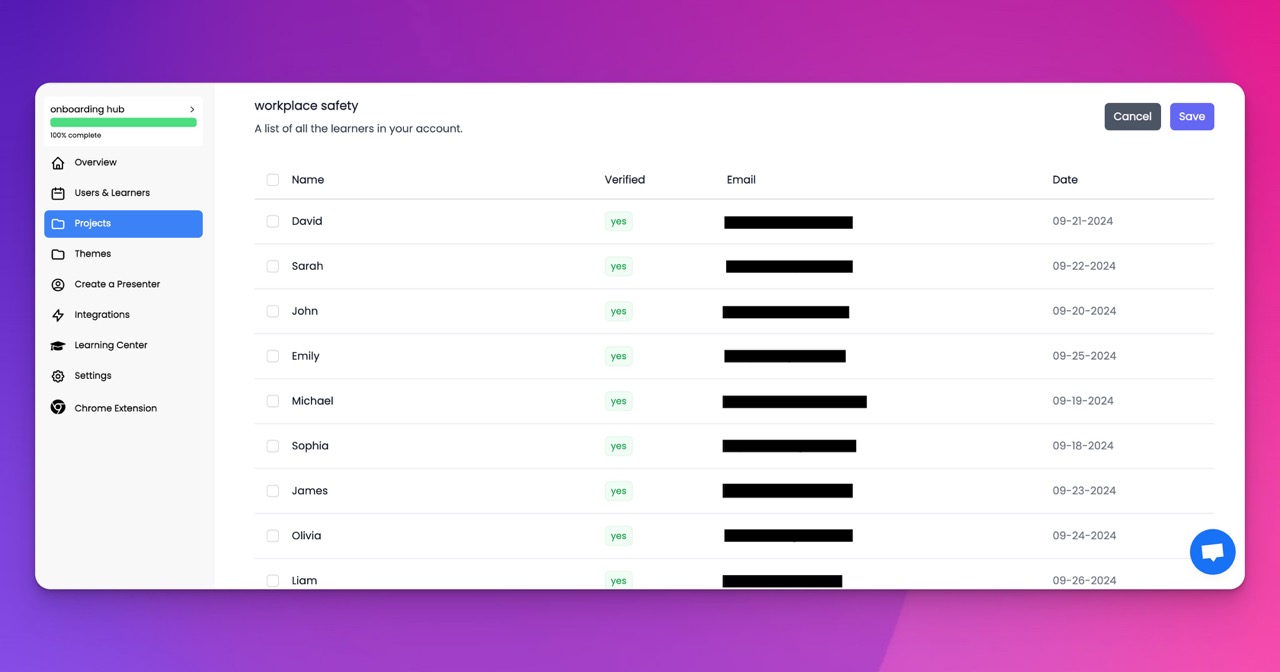🎉 Trainday now integrates with Zendesk and Hubspot 🎉 Trainday now integrates with Zendesk and Hubspot 🎉 Trainday now integrates with Zendesk and Hubspot
🎉 Trainday now integrates with Zendesk and Hubspot
🎉 Trainday now integrates with Zendesk and Hubspot
Contact
Public Transit
Employee Training for Conflict De-escalation in Public Transit
Utilizing Data and Artificial Intelligence to Expedite Employee Training for Conflict De-escalation in Public Transit
In today's fast-paced world, public transit systems face a multitude of challenges, including managing conflicts and maintaining passenger safety. As incidents of conflict continue to rise, it becomes imperative for transit authorities to equip their employees with effective conflict de-escalation skills. However, traditional training methods often consume significant time and resources. This blog post explores how leveraging data and artificial intelligence (AI) can revolutionize employee training programs, enabling the creation of relevant courses in record time.
Harnessing the Power of Data:
Data plays a vital role in understanding the dynamics of conflict situations in public transit systems. By analyzing historical records, transit authorities can identify patterns, hotspots, and recurring triggers for conflicts. This data-driven approach helps build a comprehensive understanding of the challenges faced by employees and guides the development of targeted training programs.
Artificial Intelligence: Enhancing Training Efficiency:
Artificial intelligence has emerged as a game-changer, revolutionizing various industries, and employee training is no exception. By utilizing AI algorithms, transit authorities can expedite the creation of comprehensive training courses that address the specific challenges faced by public transit employees.
1. Natural Language Processing (NLP) for Training Material Creation:
AI-powered NLP algorithms can analyze vast amounts of data, such as incident reports, customer feedback, and employee surveys, to extract valuable insights. This data can then be used to generate training materials tailored to specific conflict scenarios. NLP algorithms can also analyze employee interactions and provide personalized feedback, enhancing the learning experience.
2. Virtual Reality (VR) Simulations for Realistic Training:
VR simulations offer a safe environment for employees to practice conflict de-escalation techniques. By recreating realistic scenarios, employees can develop their skills in a controlled setting, boosting their confidence and preparedness. AI algorithms can continuously monitor the simulations, providing real-time feedback and suggestions for improvement.
3. Adaptive Learning Systems for Individualized Training:
AI-powered adaptive learning systems can personalize training programs based on employees' strengths, weaknesses, and learning styles. By analyzing individual performance and progress, these systems can dynamically adjust the training content and pace, ensuring maximum knowledge retention and skill development.
Benefits of Data and AI-Driven Training:
1. Time Efficiency: Traditional training methods often require extensive planning and preparation. By leveraging data and AI, transit authorities can significantly reduce the time required to develop and implement training programs, allowing employees to receive relevant training in a fast and efficient manner.
2. Cost Savings: Data-driven training programs eliminate the need for expensive manual research and content creation. Additionally, AI-powered simulations reduce the dependency on physical training facilities, saving costs associated with logistics and resources.
3. Enhanced Effectiveness: Tailored training programs enable employees to address specific conflict scenarios they are likely to encounter in their roles. This targeted approach enhances the effectiveness of training, resulting in improved conflict de-escalation skills and increased passenger safety.
Conclusion:
Public transit systems face a constant challenge in managing conflicts and ensuring passenger safety. By harnessing the power of data and artificial intelligence, transit authorities can develop relevant employee training courses in record time. Data analysis allows for a comprehensive understanding of conflict dynamics, while AI-driven technologies expedite the creation of training materials, virtual simulations, and adaptive learning systems. The result is a time-efficient, cost-effective, and highly effective training program that equips public transit employees with the necessary skills to de-escalate conflicts and maintain a safe and secure environment for all passengers.
Accelerate Compliance.
Deliver OSHA-Ready Courses Instantly.
Empower your team with data-driven training solutions tailored to your industry's safety standards. Stay compliant, reduce risks, and boost productivity with AI-powered course creation.
